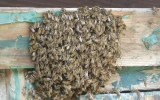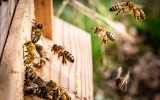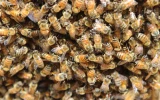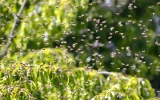The Ultimate Guide on Why Bees Swarm & How To Prevent It
Swarms of honey bees are a typical springtime occurrence. Early in the spring, honey bee colonies that made it through the winter start to lay eggs and grow. With hundreds of bees hatching every day, a productive hive may be crowded with bees by May.
Honeybees swarm in order to reproduce. It’s the natural way for their population to expand and survive for generations. They swarm in order to create more space in the hive when it becomes overcrowded with bees. To prevent swarming, you can split the hive, or reverse boxes, or rotate frames.
Swarms leaving is not something beekeepers particularly enjoy seeing. A swarm might even opt to stay on your neighbor's property next door, which could become an issue. But why did your bees need a new home, and what should you do if you see a swarm?
Summary
- Honeybees swarm mainly for reproduction.
- When a beehive becomes overcrowded, the bees prepare for swarming to create space for a new batch of colonies to grow.
- For you to be able to prevent a swarm from occurring, keep an eye out for swarm cells in the beehive.
- No one prevention strategy will always work. Just support your bees and let them swarm when they need to.
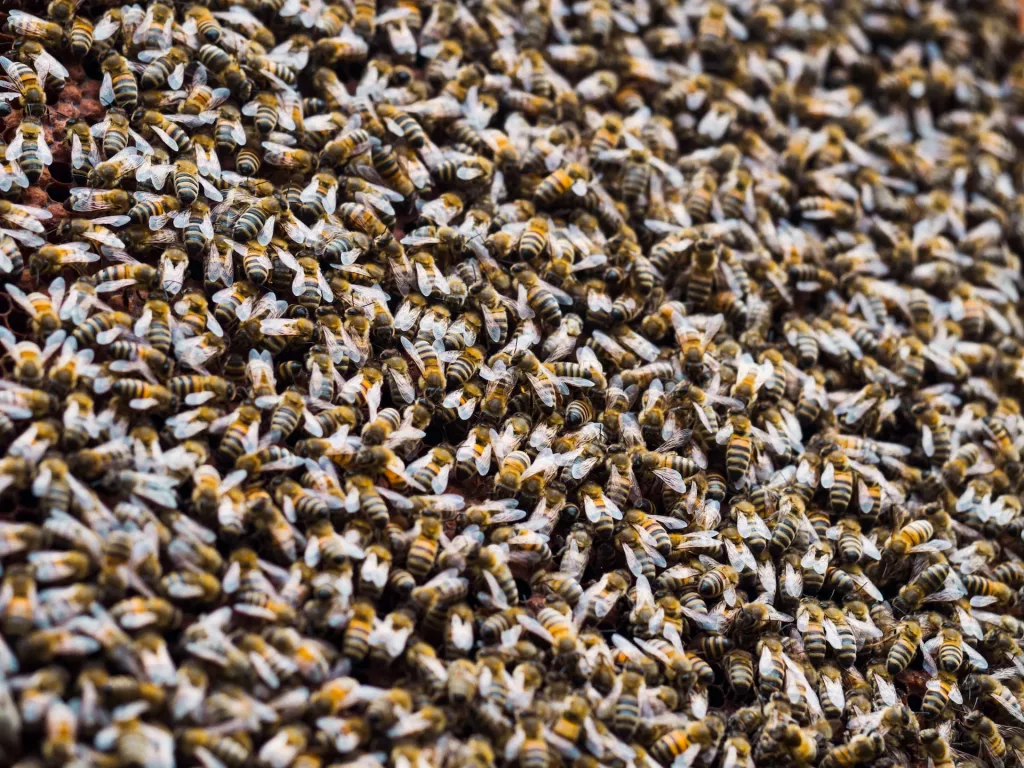
On this page:
Why Do Bees Swarm?
Honeybees, or Apis Mellifera, swarm because it is the natural method by which their colonies reproduce. To allow the new queen to procreate and carry on the reproduction cycle herself, the old queen must depart. Given that a queen bee can live up to five years, she may have a large number of eggs to deposit in a new nest. Although entirely natural, this process does not always occur on a yearly basis.
Congestion in the hive is the main cause of swarming. The number of bees in the hive increases as the queen lays at least 2,000 eggs per day. The more bees there are in the hive, the more difficult it is for the bees to detect signals from the queen bee's pheromones.
The colony's need for comb and food increases with the number of bees living there. When the hive they dwell in is eventually full, the worker bees start making plans to divide the colony in half. To put it another way, they get ready to swarm.
The worker bees develop a new impulse when there are too many bees, and the pheromone signals become twisted. They begin to develop a new queen by making queen cells that dangle off the bottom of the hive. The existing queen lays eggs in those cells. She is deprived of nourishment between laying those eggs and departing to make it simpler for her to fly in the swarm.
The workers distinguish queen bee eggs from regular worker bee eggs by feeding them a special meal called royal jelly and housing them in the specialized queen cells. The new queen emerges after the swarm has dispersed. She mates after a few days and begins to lay eggs in the old hive.
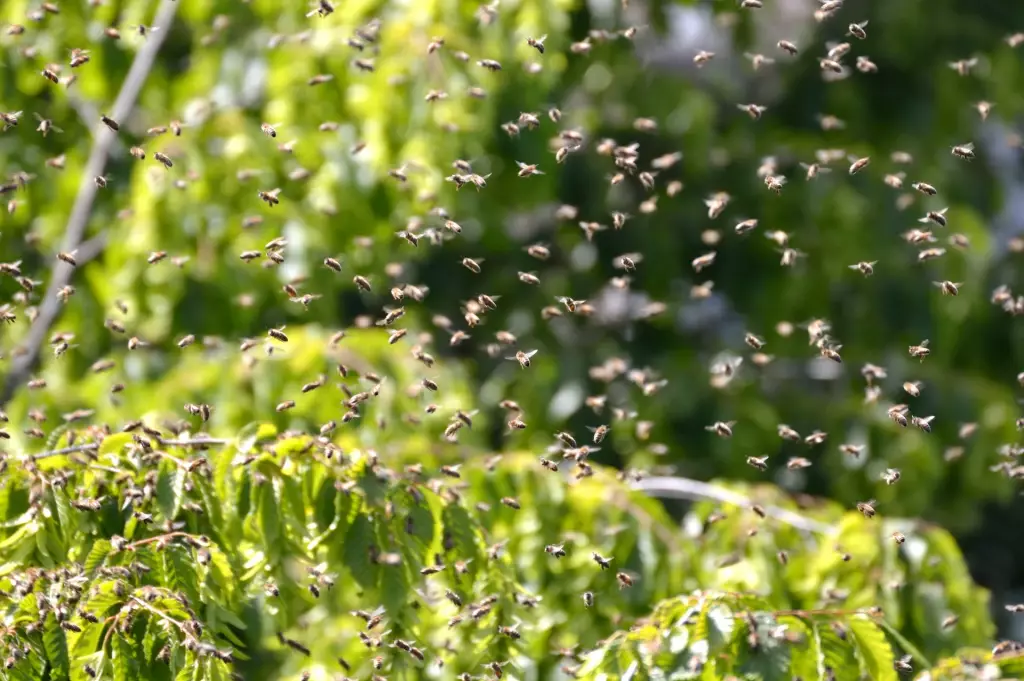
A primary swarm occurs when the queen and roughly two-thirds to three-quarters of the colony's workers depart from their original nest in search of a new hive. The old queen flies out with a cluster of mostly young bees. She departs the hive in order to start a new hive somewhere else in their pursuit of reproduction.
When a swarm departs, its workers gather in a transient group known as a bivouac. The scout bees begin looking for a new nest location while the swarm is homeless. Once they've decided on their next home, the workers create new combs, and the queen begins to lay eggs. The remaining bees in the original hive develop a new queen from fresh larvae and carry on with operations.
Swarming can happen at any time from spring to fall, but it usually happens in the spring. Honey bees spend almost the whole year constructing wax combs and storing honey inside their hive. They will fill every available inch of space with their comb for food storage and brood.
What Triggers Swarming?
Bees tend to swarm when their hive is overpopulated, becomes congested, there are a large number of young bees, and the queen's scent decreases.
Increased colony size and overcrowding
A honey bee colony will signal that it is ready to swarm when it outgrows its hive, becomes too crowded, or becomes too populous for the queen's pheromones to direct the entire workforce. The worker bees start constructing swarm cells to raise new queens.
Congestion of the brood nest
When populations grow quickly, honey bees swarm. On average, a colony of 50,000 bees may release a swarm of 37,000 bees. When more than 90% of their brood comb is in use, colonies start creating queen cells, which is the first obvious indicator of swarm preparation.
More young than old bees present
Another issue is when there are much more young bees than elderly ones, for no other reason than the fact that more bees emerge than perish. Workers and drone bees hatch anywhere from 18 to 24 days, while their individual lifespans can reach 42 days.
Younger bees are more abundant in swarms that are leaving colonies and in colonies that are getting ready to swarm. It's interesting to note that adult workers seem to cluster in the brood region of colonies that are about to swarm, even though there is more room in the nest. This phenomenon is most likely brought on by the enormous number of young workers that emerge from brood cells.
Decreased concentration of queen pheromone
Because the hive is too crowded or the queen isn't producing enough pheromones, worker bees can tell when it's time to swarm.
The workers will starve the queen in order to make her lighter so she can fly in time for the swarm. Additionally, in an effort to stop her from producing a lot of eggs, they will chase her around. If they are going to swarm, they will make new queen cells and permit the queen to lay eggs so a new queen can emerge and assume control of the hive.
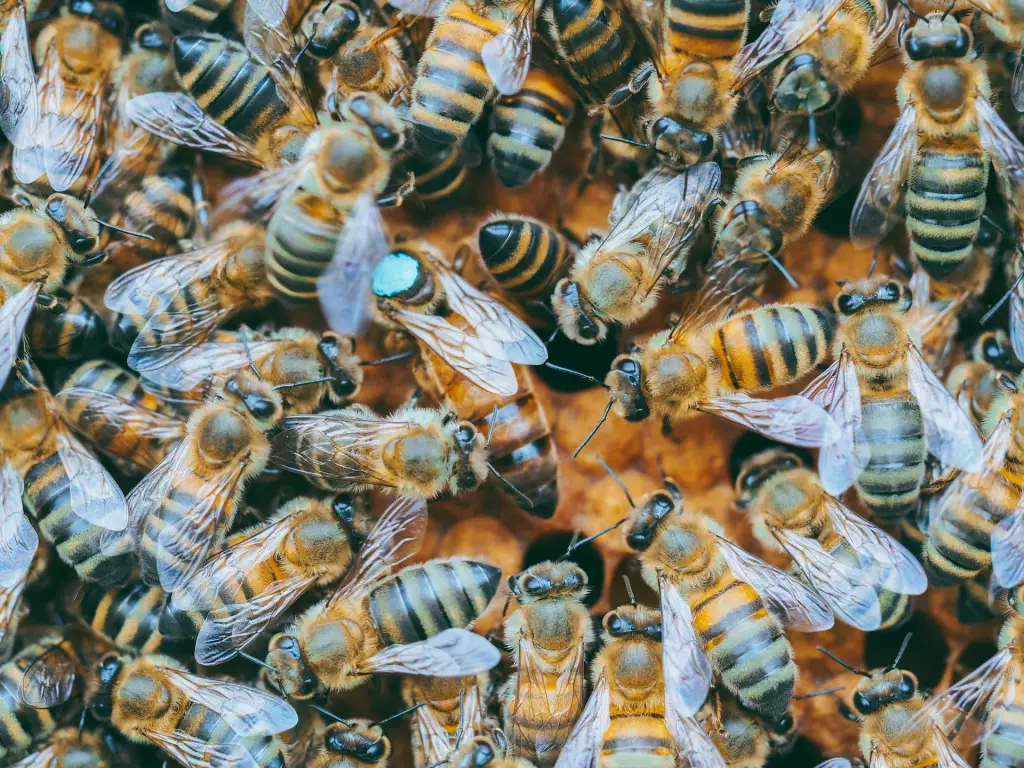
Queen bees create a variety of chemical signals that are used to communicate their presence and status to the rest of the colony. These signals have a big impact on worker behavior and physiology.
Although there is evidence that queens also make volatile chemicals that may circulate in hive spaces, queen-derived chemicals are spread throughout the colony via direct contact of workers with the queen or with wax. The beginning of queen rearing is thought to be triggered by lower quantities of these pheromones released by the queen in the hive.
How to Prevent Bee Swarming
Since we need all the hives to be productive before the honey season, we should make an effort to prevent bee swarms. No beekeeper wants their own bees to swarm away, despite the fact that many beekeepers enjoy swarms that arrive from other hives. The honey yield for the season will suffer greatly as it takes time to rebuild the colony.
Practically every beekeeper will lose bees at some point, and swarm prevention is nearly impossible. However, there are measures to lessen the likelihood of swarming. Your best course of action is to spot warning indicators as early as possible and act quickly.
Hive splitting
To split a hive, you have to move some of the current frames to a new hive. You might want to first build up an existing hive before separating one. This is simply accomplished by adding a super, which makes room for the colony to keep building. Avoid adding these supers too soon because that can have the reverse impact of what you intended.
Give your bees plenty of room at all times. Bees require space in order to raise their young, store honey, nectar, and pollen, and make beeswax.
Collect some honey
You can also make space for agitated bees by collecting some honey prior to adding more supers. This is a smart move if your colony is storing honey in brood frames more and more frequently.
Transfer brood frames from the stronger hives
You can take some bees out of a healthy hive and use them to strengthen weaker hives in apiaries with more than one hive. Younger nurse bees should be used for this strategy since they will fit in with the new colony. Bees that are out foraging will return to the location of their original hive.
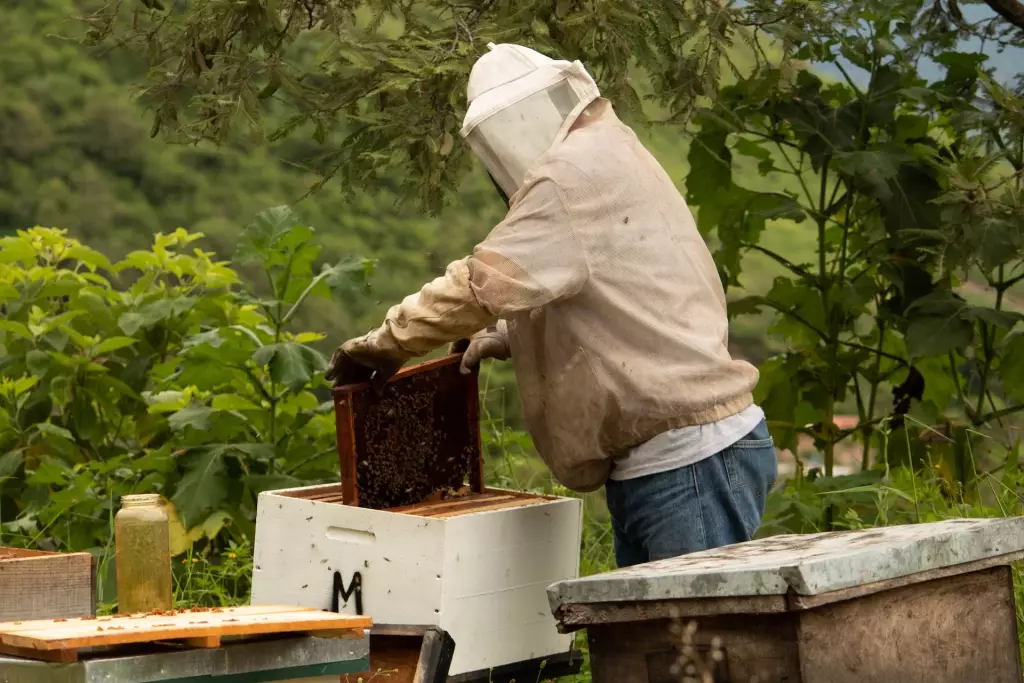
Provide proper ventilation and airflow
In warmer months, provide your colonies with lots of adequate ventilation. When it's hot outside, remove the entry reducers and try spacing the supers so they aren't flush against one another. This will let more air circulate. Another way to improve ventilation in the hive is by using a screened bottom board.
Always keep the hive's airflow and drainage working properly. Place the hive in an area with sufficient airflow and keep the grass cut around it. Your hive will remain ventilated if you place it on a hive stand.
Use a young queen
Try to use young queens for your beehives. During periods of rapid growth and egg production, older queens are more likely to fail. Introduce a young queen to the colony after midsummer. Apparently, swarming colonies are less common among queens coming out of their first winter.
Remember that no strategy will always be successful. Honeybees can be unpredictable, and they sometimes have an overwhelming need to swarm. If that occurs, carry on and aid in the repopulation of the remaining bees.
How Do Honeybees Swarm?
Simply put, the colony's current queen and between two-thirds and three-quarters of its bees leave the hive in a huge, buzzing black cloud. Thousands of ecstatic bees searching for a spot to cluster and trying to locate the queen fill the air when bees swarm. They just know that it's time to leave the hive, but they have no idea where they are headed.
After a brief flight, the swarm temporarily congregates in a convenient location as scout bees search for a new nest cavity. Usually, they move within 100 meters of their original position and form a cluster.
After the swarm has left, the parent hive is practically left without a queen for a while. It could take a week or longer before the first new virgin queen emerges from her queen cell.
Typically, the swarming bees rest on a hedge or tree branch. In cities, they may gather on cars, lampposts, benches, and other things. The swarm is closely packed, shielding the queen bee in the middle. Since all of the bees had gorged on lots of honey before leaving the hive and are unsure of when their next meal will be, the swarm is typically relatively calm at this point.
Scout bees are sent out to find a new home. They typically locate a new residence in a few hours, although occasionally it might take days. The colony departs once more and settles in once they have decided where their new home will be. A swarm may create fresh wax comb quickly, allowing the queen to resume egg production.
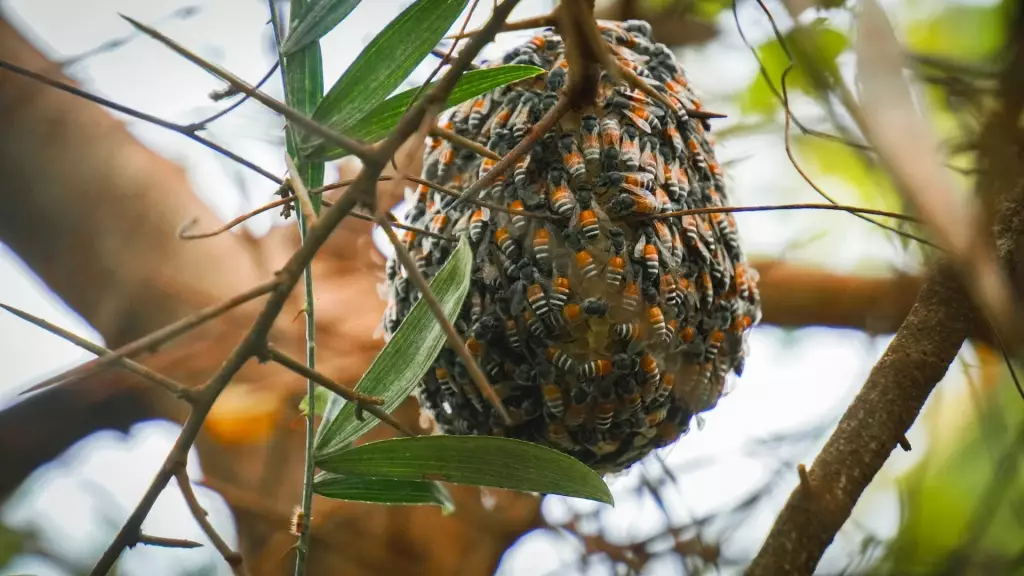
What To Do With A Bee Swarm
Do not panic or attempt to harm or move the swarm yourself if it has decided to cluster on your property. You have to realize that bee swarming is a transient phenomenon that displays the bees' search for a new home.
Bees will only sting when they feel threatened and only in self-defense. It can be better to remain patient, show restraint, and ignore the swarm if you see a bee swarm close to your home. There is a chance that the bees will retaliate if you try to frighten them.
Swarms congregate for a few hours or a few days until they can find a suitable new home. If the bees are not bothering you, you can leave them alone. They usually go away on their own after the scout bees find a new home. Once they locate a short-term or long-term residence, they will be out of everyone's way.
Contrary to popular opinion, swarming bees are less harmful than their normal selves. This is because bees are extremely susceptible to the risk of starvation and death should their body's supply of honey run out.
